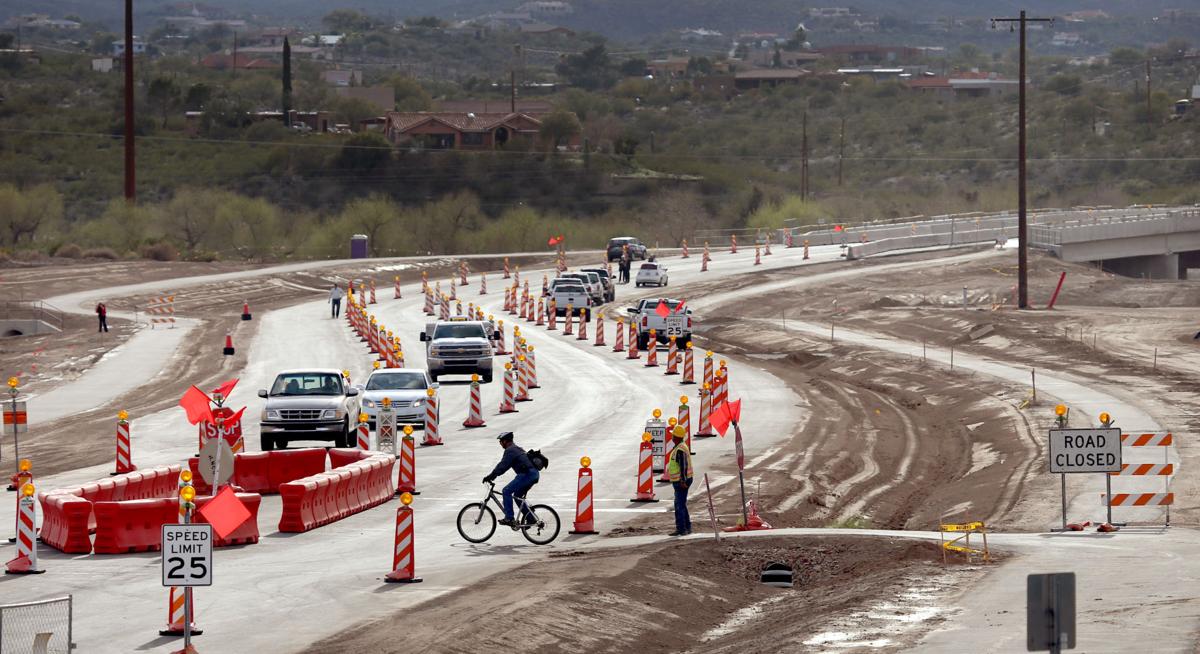On Tuesday, the Board of Supervisors will consider a five-year, 25-cent property tax whose proceeds would fund the long-needed repair of crumbling local streets across Pima County, not just in its unincorporated areas.
However, the plan has shifted somewhat since May 23, when — with a 3-2 vote — the supervisors approved a tentative budget that included a 14-cent tax hike to accommodate the proposal. The property tax — if approved Tuesday — would generate an estimated $19.5 million per year, with $8.2 million going toward local roads in unincorporated areas and the remainder split between Marana, Oro Valley, Sahuarita, South Tucson and Tucson, which gets the largest share.
Likely the most significant change between the first and revised proposal is how that pot of money will get divvied up.
One of the terms proposed for its use by County Administrator Chuck Huckelberry was that the development of “local road repair priorities will be up to the supervisor,” though the individual projects would still eventually be put to the full board for approval, according to a May 23 memo.
Supervisors Ally Miller and Steve Christy are strong proponents of that approach, agreeing that individual supervisors are in the best position to know the roads needs of their districts.
Though she did not respond to requests for comment for this column, Miller previously told the Road Runner, “I think it’s very important that the supervisors have the authority to make the determination in where these monies go.”
But in the new proposal, that power is largely gone. In its place, Huckelberry proposes the creation of a 13-member Transportation Advisory Committee, which would make recommendations, in part based on input from the county transportation department, to the board on the road repair projects to prioritize. For projects in cities and towns that already have their own transportation advisory committees — such as Tucson — the two committees would collaborate and submit joint recommendations. Town or city councils would make those recommendations in jurisdictions without such advisory committees, according to the memo.
The county’s committee, if created, would also make recommendations about projects funded by RTA and HURF dollars, as well as the county transportation department’s annual budgets, among other issues. Each supervisor would get two appointments from their district, and Huckelberry would get three.
The plan came in response to concerns raised by the three other supervisors that a supervisor-led process could lead to perceptions of political favoritism and unequal treatment. At the May 23 meeting, Supervisor Richard Elías described it as potentially “porky.”
Responding to the new plan, Elías told the Road Runner it was a “vast improvement.”
Supervisor Sharon Bronson also praised the removal of a previous recommendation process.
Rather than improving trust in the use of road property tax proceeds, Christy thinks that turning prioritization over to the committee could actually increase “distrust and misgivings.”
Christy is also concerned about another complicated, but significant, change. In the original plan, the entire $19.5 million annual pie was divided between unincorporated areas, supervisor districts and incorporated towns and cities using relative taxable values, population and miles of local roads. The upshot was that each supervisor district had a specific dollar allocation, with Miller’s District 1 receiving the largest cumulative total: just shy of $5 million combined in Marana, Oro Valley, Tucson and unincorporated Pima County.
That’s all still true, but only for the so-called tax neutral portion of the $19.5 million: roughly $8.6 million raised by the portion of the 25-cent property tax that would be offset by an 11-cent decrease in other county property taxes.
The remaining $10.9 million — raised through a 14-cent property increase and designated as “accelerated funding” — would be split between incorporated and unincorporated areas using only relative taxable property values, with no specific allocations for each of the five supervisor districts.
“There’s a question as to whether or not certain districts are going to get certain money, and that even lends itself to more suspicion by the taxpayers,” Christy said, adding later that “it sounds very nebulous at best.”
Elías, however, was less concerned about possible inequity between the five districts.
“My intention is to see that we’re fair with all the jurisdictions and all the various districts in Pima County, because now is the time to be magnanimous about these things,” he said.
DOWN THE ROAD
Crews are stopping work on Arizona 86 (Ajo Highway) between South Fuller and West Valencia roads through the fall due to temperatures too high for chip sealing. Work is scheduled to resume in September, and the stretch will remain a no passing zone through October. Completion is anticipated in the fall.
Crews will be installing traffic signals at the East Grant Road-North Park Avenue intersection on Tuesday and Wednesday from 9 a.m. to 3 p.m. each day. The left turn lane on eastbound and westbound Grant will be intermittently closed. The work is part of the Grant Road Improvement Project’s Phase II.





